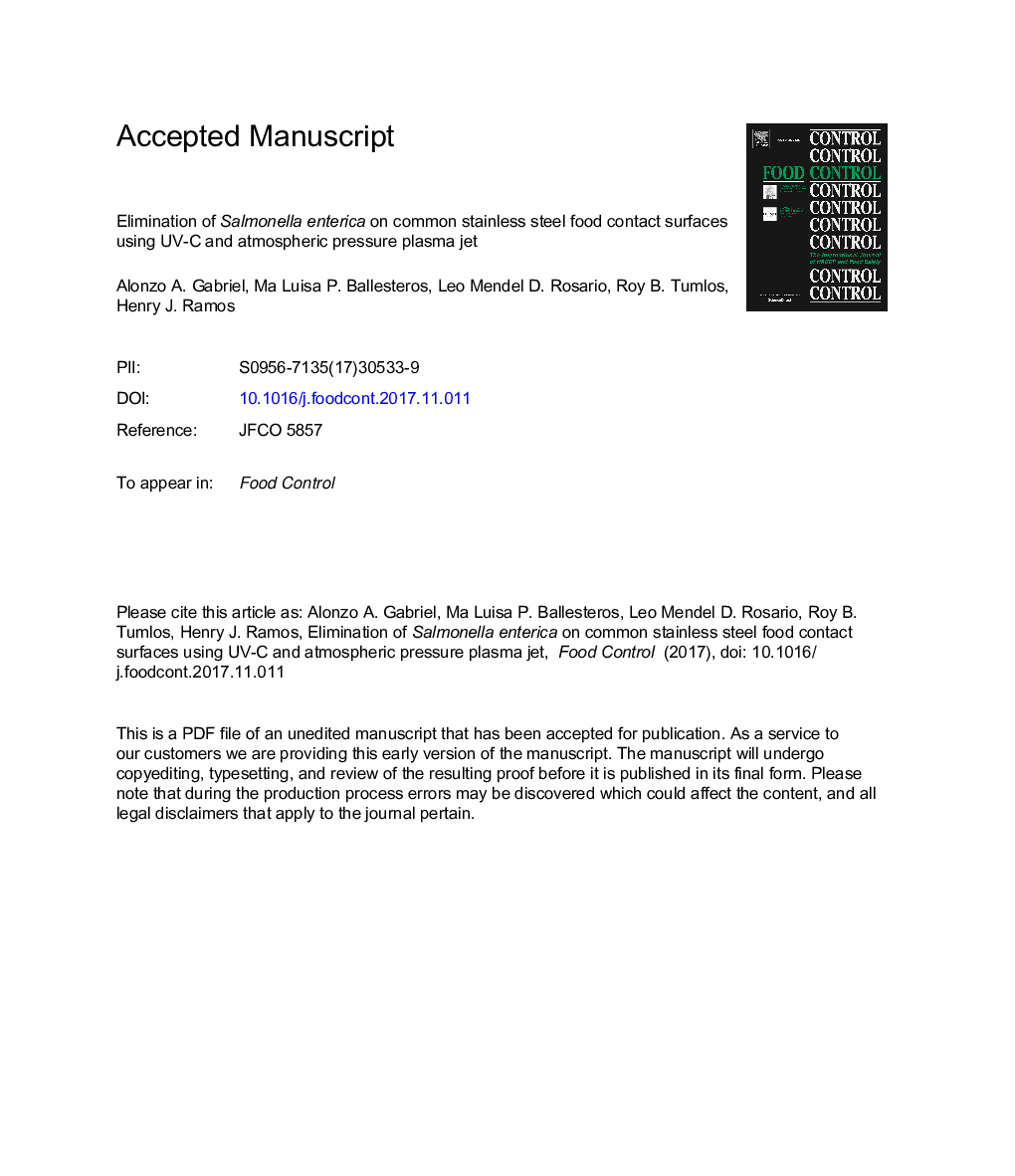| Article ID | Journal | Published Year | Pages | File Type |
|---|---|---|---|---|
| 8888126 | Food Control | 2018 | 35 Pages |
Abstract
This study aimed to evaluate the efficacy of ultraviolet-C irradiation and atmospheric pressure plasma jet treatment as inactivation methods of Salmonella spp. on stainless steel surfaces commonly used as food contact surfaces. Two types of stainless steel namely 304 and 316, were used as test surfaces with each type having three different finishes: 2B, Hair line (HL), and Mirror (MR). A cocktail of 7 serovars of S. enterica at mid stationary phase (17 h) cells were allowed to adhere onto the surfaces (4h) prior to UV-C and plasma treatment. Results showed that the test organism exhibited a biphasic UV-C inactivation composed of a fast log linear inactivation phase followed by a slower inactivation tail on all test surfaces. The D values calculated from the faster log linear inactivation phase ranged from 2.54 (316 2B and 316 HL) to 4.31 s (304 2B). The maximum population reduction calculated before the inactivation tail ranged from 3.32 (316 HL) to 4.97 log CFU/in2 (304 MR). Plasma treatment of metal surfaces resulted in abrupt increase in surface temperature, reaching up to 180 °C within 15 s of treatment, and led to log linear inactivation in all surfaces treated with atmospheric plasma jet. The D values ranged from 2.66 (304 2B) to 3.43 s (316 MR). Both metal type and surface finish were observed not to affect the efficacies of UV-C inactivation and atmospheric pressure plasma jet treatment. The results obtained in the study demonstrated the potential of the tested physical treatments as alternatives to commonly used food contact surface chemical sanitation protocols.
Related Topics
Life Sciences
Agricultural and Biological Sciences
Food Science
Authors
Alonzo A. Gabriel, Ma. Luisa P. Ballesteros, Leo Mendel D. Rosario, Roy B. Tumlos, Henry J. Ramos,
